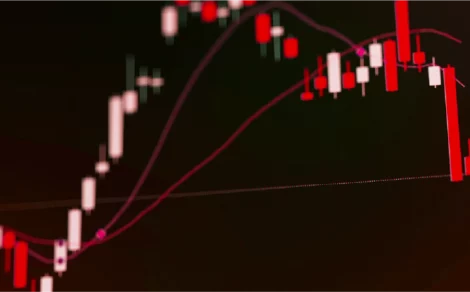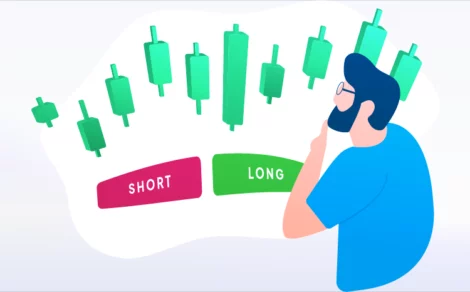Market makers or intermediaries earn in various ways, one of which is through the bid-ask spread. But what exactly is the bid-ask spread, and what does “bid” and “ask” mean in the stock market?
A bid is the highest price that an investor or buyer is willing to pay for the share. However, the ask price is the lowest price a seller is willing to accept for his shares.
The difference between these two prices is known as the bid-ask spread, a key factor in trading that impacts liquidity and transaction costs.
What is a Bid-Ask Spread?
Many investors are unaware of this key source of income for market intermediaries. However, with numerous trade settlements, these intermediaries can generate significant profits.
The bid-ask spread refers to the difference between the bid price (the highest price a buyer is willing to pay) and the ask price (the lowest price a seller is willing to accept). Market intermediaries buy at the ask price, and sell at the bid price, and the difference, known as the bid-ask spread becomes their profit.
How to Benefit from the Bid-Ask Spread?
Understanding the bid-ask spread can help you make smarter and more cost-effective trading decisions. The bid price is what buyers are willing to pay, while the ask price is what sellers want. The difference between the two is called the spread, and it acts as an invisible cost in every trade.
To benefit from the bid-ask spread, traders should aim to buy at the bid and sell at the ask. This approach is most useful in liquid markets, where the spread is narrow. For example, large-cap stocks and index-based ETFs often have small spreads due to high trading volumes, which makes it easier for retail investors to enter and exit trades with minimal cost.
Another way to benefit is by using limit orders instead of market orders. A limit order allows you to set your own price, helping you avoid paying the wider ask price in low-volume stocks. This is particularly helpful in volatile or illiquid markets, where spreads tend to widen.
Professional traders and market makers often profit by capturing the spread repeatedly through high-frequency trading. While retail investors cannot always match that scale, being mindful of the spread and trading at the right time, such as during peak market hours, can reduce overall trading costs and improve returns over time.
By staying aware of the bid-ask spread and using smart order placement, you can minimise costs and make more efficient trades in the stock market.
Elements of the Bid-Ask Spread
| Element | Description |
| Bid Price | The highest price a buyer is willing to pay for a security. |
| Ask Price | The lowest price a seller is willing to accept for a security. |
| Spread | The difference between the ask and bid prices; represents transaction cost. |
| Liquidity | Narrow spreads usually indicate high liquidity; wider spreads indicate low liquidity. |
| Market Depth | Reflects the number of buy/sell orders at various price levels. |
| Market Volatility | Higher volatility often results in a wider bid-ask spread. |
| Order Size | Large orders may affect the spread, especially in illiquid securities. |
| Trading Volume | Stocks with higher daily volumes generally have tighter spreads. |
| Market Makers | Entities that provide liquidity and help maintain a stable spread. |
| Execution Speed | Faster execution is often seen in markets with narrower spreads and high liquidity. |
How to Calculate Bid-Ask Price?
Once you understand the bid-ask spread, calculating it is simple. It is determined by subtracting the ask price from the bid price using the following formula:
Bid-ask Spread= Bid price – Ask price
(Price Difference or Negotiation Gap= Max buyer price – Minimum price for seller)
Here is an example:
- If the maximum bid price per share is ₹100 and the minimum ask price per share is ₹95, then the bid-ask spread will be ₹5 per share.
- If the buyer buys 100 shares then, the total profit of the intermediary will be (₹5×100) = ₹500.
Many factors affect the difference between bid and ask price. Some of them are trade volume, market behaviour and volatility, popularity of that share and liquidity aspect of that security.
What is the Importance of Bid-Ask Spread?
Understanding the bid-ask spread is crucial for both traders and market intermediaries. For traders, it helps in making informed investment decisions and optimising trade strategies, while for intermediaries, it serves as a key source of income.
Here are a few ways in which bid-ask spread is important for investors and intermediaries:
- Strategic trading: Investors should analyse the true value of a stock before buying or selling to minimise the bid-ask spread and reduce costs.
- Negotiation: A clear understanding of bid-ask price differences allows investors to develop better negotiation skills, helping them secure favourable trade prices.
- Understanding Market Behaviour: Recognising market trends, seasonal fluctuations, and the impact of bull and bear phases can help investors predict bid-ask spreads more effectively.
By understanding and managing the bid-ask spread, both investors and intermediaries can enhance their market strategies and financial outcomes.
What is Bid-Ask Spread in Different Markets?
The bid-ask spread exists across various financial markets, though its dynamics may vary depending on the asset type and market structure. Here is how it works in different markets:
-
Crypto-Currency Markets
In the crypto market, the bid-ask spread functions similarly to traditional financial markets. It represents the difference between the highest price a buyer is willing to pay (bid) and the lowest price a seller is willing to accept (ask). The spread is collected by intermediaries, such as exchanges or liquidity providers, facilitating transactions between buyers and sellers.
-
Commodity Markets
The commodity market also follows the same bid-ask spread principle. However, tools like spread estimators are commonly used to help researchers, regulators, and exchange officials assess the efficiency of market pricing. This makes the bid-ask spread in commodities slightly different from that in financial markets, as external factors like global supply and demand can heavily influence price movements.
-
Bond market
In the bond market, the bid-ask spread functions similarly to stock markets, representing the difference between the bid and ask prices. However, bond spreads tend to be influenced by liquidity levels, credit risk, and market conditions.
How the Bid-Ask Spread Affects Your Trades?
The bid-ask spread represents the transaction cost that both buyers and sellers incur when trading securities. It plays a crucial role in determining the overall cost and profitability of a trade. Here is how it impacts investors:
- Rising cost: The bid-ask spread acts as an implicit cost of trading. A wider spread means higher costs for both buyers and sellers, reducing the overall efficiency of transactions.
- Decreases Profitability: Buyers must pay the asking price, which increases their purchase cost. To make a profit, they must first recover this cost before seeing gains.
Final Thoughts
The bid-ask spread is dynamic and influenced by how well investors place their bids and their understanding of the shares they trade. To optimise their trades, investors should assess the true value of a stock and its future growth potential to set a strategic bid or ask price.
Torus Digital offers top-tier intermediary services with low bid-ask spread charges, ensuring cost-efficient trading. With a seamless 3-in-1 trading and savings account, you can manage your investments effortlessly.
Download Torus Digital today and take your trading journey to the next level!








